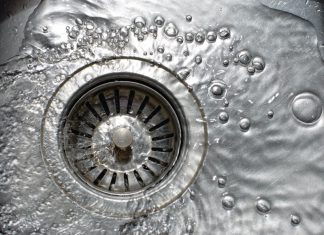Becoming a homeowner is a significant milestone that marks the achievement of a long-cherished dream. The sense of pride and ownership that comes with having your own place is unparalleled. But alongside the joys of home ownership, some financial responsibilities and challenges must be navigated wisely. As a new homeowner, managing your expenses efficiently is necessary to ensure you can enjoy your new place without stretching your budget to its limits.
Owning a home includes a unique set of financial considerations, from mortgage payments and property taxes to maintenance and utilities. To thrive in this new chapter of your life, you’ll need a strategic approach to your finances. These money-saving tips will empower you to make informed decisions, reduce costs where possible, and create a prosperous home ownership experience.
Whether you’ve just bought your first house or have upgraded to a new residence, these seven strategies will help you maintain financial stability while reaping the rewards of having a place to call your own.
Create a Budget
One of the first steps to financial stability as a new homeowner is creating a comprehensive budget. A well-structured budget helps you keep track of your income and expenses, allowing you to allocate funds for mortgage payments, utilities, maintenance, HVAC, and more. Start by listing all your monthly income sources, like your salary, investments, or side hustle earnings.
Next, identify and categorize your monthly expenses, including your mortgage, property taxes, insurance, utilities, groceries, and discretionary spending. With a clear picture of your finances, you can make informed decisions about where to cut costs and where to allocate more resources.
Regular Home Maintenance
Preventive maintenance is key to avoiding costly repairs in the future. As a new homeowner, you should establish a regular home maintenance routine. Start by creating a checklist of essential tasks that need to be performed regularly, like HVAC system servicing, gutter cleaning, and roof inspections.
Regular HVAC system maintenance not only ensures your home remains comfortable but also improves energy efficiency. A gas furnace can be found in most households, but is rarely paid attention to by home owners. Dirty filters and partially blocked gas lines can make your system work harder and consume more energy. Even more alarming is that gas furnaces can be hazardous to you and your home when not functioning properly. Scheduling annual HVAC check-ups can identify potential issues early, saving you from expensive repairs down the road.
Energy Efficient Upgrades
Energy costs can be a significant part of your monthly expenses. By making energy-efficient upgrades to your home, you can reduce your utility bills and make a positive impact on the environment. You can start with simple changes like replacing traditional incandescent bulbs with LED lighting. LED bulbs are not only energy-efficient but also have a longer lifespan, which means fewer replacements and lower costs in the long run.
Another cost-effective upgrade is sealing gaps and cracks in your home’s windows and doors. Drafty windows and doors can lead to heat loss during the winter and cool air escape during the summer, causing your heating and cooling systems to work harder.
Sealing these gaps with weatherstripping or caulk can improve your home’s energy efficiency and save you money on heating and cooling expenses. While the upfront costs of insulation may seem high, the long-term savings on energy bills make it a wise investment.
Smart Thermostat Installation
Installing a smart thermostat is a smart move for new homeowners looking to save on heating and cooling costs. These devices give you more control over your home’s temperature, creating a more energy-efficient and comfortable living environment. With a smart thermostat, you can program heating and cooling schedules to match your daily routine, ensuring that your HVAC system runs only when needed.
Many smart thermostats offer features like remote access through mobile apps, which means you can adjust your home’s temperature settings even when you’re away. This capability allows you to conserve energy and reduce heating or cooling when no one is at home, further lowering your utility bills.
DIY Projects
Taking on do-it-yourself (DIY) projects can be a cost-effective way to improve your home and save money. While not every task should be DIY, many minor repairs and improvements can be handled with some research and a bit of elbow grease. Popular DIY projects for new homeowners include:
- painting
- basic plumbing fixes
- landscaping
- furniture restoration
DIY projects not only save you money but also provide a sense of accomplishment and ownership in your home. Just remember to prioritize safety and research thoroughly before attempting any DIY work.
Refinance Your Mortgage
If interest rates have dropped since you initially purchased your home or if your credit score has improved, refinancing your mortgage could be a strategic financial move. Refinancing involves replacing your existing mortgage with a new one with better terms, like a lower interest rate or shorter loan duration.
Lowering your interest rate can result in reduced monthly mortgage payments, which can save you a significant amount of money over the life of your loan. Before refinancing, consider your closing costs, the current interest rate environment, and how long you plan to stay in your home.
Shopping around for the best mortgage rates and comparing offers from different lenders is necessary to ensure you get the most favorable terms when refinancing. Keep in mind that the ideal time to refinance may vary, so consult with a financial advisor or mortgage professional to determine if it’s the right decision for your specific situation.
Consider Home Warranty Plans
Home warranty plans can provide peace of mind and financial protection for new homeowners. These plans typically cover the repair or replacement of major appliances and systems, including HVAC, plumbing, and electrical, when they break down due to normal wear and tear. By investing in a home warranty plan, you can avoid unexpected and expensive repair bills.
When a covered item malfunctions, you can contact the warranty provider, and they will arrange for a service technician to assess and repair the problem. You’ll pay a service fee, but the bulk of the repair costs will be covered by the warranty.
Final Thoughts
Becoming a new homeowner is an exciting journey, and with the right financial strategies, you can enjoy your home while saving money. These seven essential money-saving tips, including budgeting, energy efficiency upgrades, smart thermostat installation, regular home maintenance, DIY projects, mortgage refinancing, and home warranty plans, can help you navigate the challenges of homeownership and build a secure financial future. By being proactive and making informed decisions, you can ensure that your new home remains a valuable and cost-effective investment.















